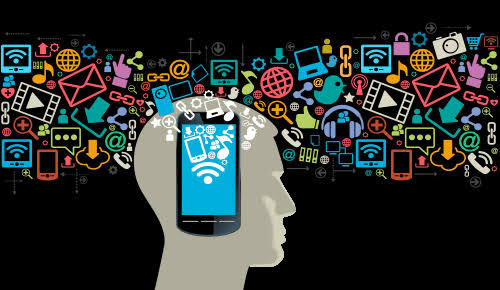As of June 2025, smartphones have become powerful instruments for overcoming language and communication barriers around the world.
Smartphones have evolved beyond their initial use as portable phones in the connected world of 2025. These days, they are effective instruments that affect cross-cultural communication, interaction, and idea sharing. The ability of smartphones to eliminate communication and language barriers is among their most significant contributions. Smartphones are making it easier than ever for people with different linguistic backgrounds to understand one another thanks to advancements in artificial intelligence, natural language processing, and real-time translation apps.
The Development of Smartphone-Based Communication
The way we communicate has changed dramatically as a result of smartphones. Users now communicate via voice notes, video chats, and instant messaging instead of just voice calls and SMS. International communication is made easier by these platforms, which provide instantaneous interaction across time zones and geographical boundaries.
The availability of translation tools and multilingual features in these applications guarantees that linguistic disparities will no longer impede communication between people who do not speak the same language. Since their inception, voice recognition software, autocorrect, and predictive text input have all significantly improved. By 2025, the majority of smartphones will have AI-powered keyboards and multilingual speech-to-text capabilities. This enables users to type or speak in their native tongue while the phone translates it into the language of the recipient.
Translation in Real Time and Language Accessibility
Real-time translation is one of the most revolutionary features of smartphone technology in terms of removing barriers to communication. Instant voice, text, and even image translation is now possible with apps like Google Translate, Microsoft Translator, and other AI-powered platforms. In a classroom, business meeting, or while travelling, a user can have a conversation with someone who speaks a completely different language with a few taps.
Neural machine translation models, which are used in these apps, have become more accurate and contextually aware. In contrast to earlier rule-based translation tools, contemporary systems take cultural quirks, idioms, and sentence structure into account. This indicates that a translated message conveys the intended tone and context in addition to its literal meaning.
Smartphones in Multilingual Work Environments
Communication between team members becomes crucial as businesses grow internationally and hire talent from different continents. Apps with language support features, such as Slack, Zoom, Microsoft Teams, and WhatsApp, enable multilingual collaboration on smartphones. Workers can write in their native tongue and use built-in translation capabilities to ensure that their messages are comprehensible to their peers.
By 2025, a lot of these platforms will also be able to translate video calls simultaneously, enabling users to talk in real time while others view subtitles in their native tongue. As a result, inclusive workplaces are produced where participation and idea sharing are not restricted by language.
Smartphones as Teaching Aids for Language Acquisition
The use of smartphones in language instruction has a big impact as well. In order to teach users new languages in an engaging manner, language learning applications like Duolingo, Babbel, Rosetta Stone, and more recent AI-based platforms employ gamification, adaptive learning, and interactive exercises. Students can use their smartphones to practise speaking, listening, reading, and writing—often with immediate feedback.
These resources are especially helpful in areas with limited access to formal language instruction. For example, a lot of students in Nigeria are now using mobile learning applications to learn Arabic, French, Mandarin, or English. These apps' accessibility and affordability democratise language learning by equipping users with the necessary skills to communicate globally and seek employment or educational opportunities overseas.
Social Media Interaction And Cultural Exchange
Smartphones are the entry point to social media platforms, which have been instrumental in promoting international discourse. Users are creating and consuming content in dozens of languages on platforms like X (formerly Twitter), YouTube, Instagram, and TikTok. Multilingual captions, translation choices, and automatic subtitle generation facilitate creators' access to a worldwide audience.
More empathy and understanding are fostered by this cross-cultural exchange. Even if they don't speak the same language, viewers can still learn about the values, humour, and customs of other cultures. Smartphones thus foster cultural exchange and global citizenship in addition to lowering barriers to communication.
Restrictions and difficulties
There are still difficulties in spite of these developments. Despite advancements, translation technology is not flawless. Even now, misinterpretations can happen, especially when using idiomatic or complex phrases. Accents, background noise, and ambiguous speech can also be problematic for real-time translation, which can occasionally result in miscommunications.
Concerns have also been raised regarding an excessive dependence on translation software at the expense of natural language acquisition. According to some educators, deep linguistic and cultural understanding may be limited when automated translation is used as a crutch. Another issue is privacy. There are concerns regarding the storage and use of private conversations because many translation and communication apps demand access to microphones, text messages, or user data. Policymakers and developers are still trying to increase user control over data and transparency.
Smartphones and Accessibility for People With Hearing and Speech Impairments
People with speech or hearing impairments can now communicate more easily thanks to smartphones. Real-time captioning of voice conversations is made possible by speech-to-text technology, and deaf users can communicate visually with video chat apps that support sign language.
Message apps with voice typing and predictive responses have made text-based communication, which was previously slow and limited, instantaneous and dynamic. Certain applications enable users to interact via haptic feedback systems or create customised sign language avatars. These developments guarantee that language and communication tools accommodate a variety of modes of expression in addition to spoken languages.
